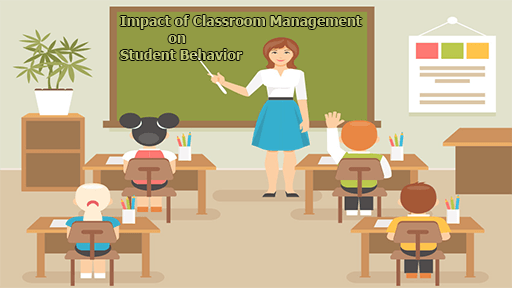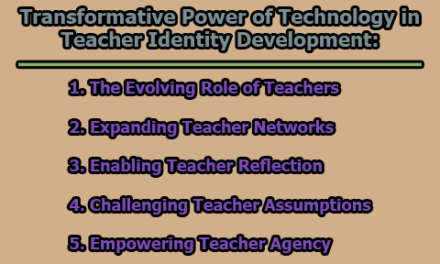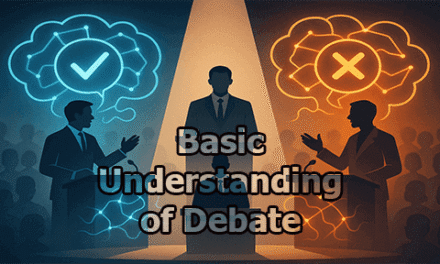Impact of Classroom Management on Student Behavior:
Classroom management is a critical component of effective teaching and has a profound influence on student behavior. It encompasses a wide range of strategies and techniques that educators employ to create an environment conducive to learning while minimizing disruptions. The way a classroom is managed can significantly affect students’ attitudes, engagement, and overall behavior. This article will delve into the impact of classroom management on student behavior, exploring the various factors, strategies, and outcomes associated with this vital aspect of education.
Section 1: Theoretical Framework of Classroom Management:
To understand the effects of classroom management on student behavior, it is essential to establish a theoretical framework. Several educational theories underpin classroom management practices, including:
1.1 Behaviorism: Behaviorism, a theory rooted in the work of B.F. Skinner, posits that human behavior can be shaped and controlled through reinforcement and punishment mechanisms. Skinner’s operant conditioning theory suggests that individuals are more likely to repeat behaviors that are followed by rewards and less likely to repeat behaviors that lead to punishment (Skinner, 1953).
In the context of classroom management, behaviorist principles manifest through strategies that involve rewards and consequences. For instance, providing positive reinforcement, such as praise or small rewards, for desirable behaviors like active participation or completing assignments on time can encourage students to continue those behaviors. Conversely, consequences, such as time-outs or loss of privileges, are used to deter undesirable behaviors, promoting a controlled and orderly classroom environment (Brophy & McCaslin, 1992).
1.2 Humanism: Humanistic educational theories, championed by Abraham Maslow and Carl Rogers, focus on the holistic development of individuals, emphasizing psychological and emotional needs. Maslow’s hierarchy of needs highlights that humans have basic needs, including physiological, safety, belonging, esteem, and self-actualization needs (Maslow, 1943).
In the context of classroom management, humanistic principles recognize that students’ behavior can be influenced by their unmet psychological and emotional needs. Educators who take a humanistic approach prioritize creating a supportive and inclusive classroom environment where students feel valued, respected, and emotionally safe. By addressing students’ emotional and psychological needs, educators can promote positive behaviors and foster a sense of belonging and self-esteem (Rogers, 1969).
1.3 Cognitive Constructivism: Cognitive constructivism, as championed by Jean Piaget and Lev Vygotsky, emphasizes the role of active learning and cognitive development in education. Piaget’s theory posits that learners construct knowledge through their experiences and interactions with the environment, while Vygotsky’s sociocultural theory underscores the importance of social interaction and cultural context in learning (Piaget, 1952; Vygotsky, 1978).
Classroom management strategies aligned with cognitive constructivism aim to engage students in active learning, critical thinking, and problem-solving. Teachers create opportunities for students to explore and construct their own understanding, encouraging independent thinking and cognitive growth. By stimulating students’ intellectual curiosity, educators can positively impact behavior as students become more intrinsically motivated to learn (Schunk, 2012).
1.4 Social Learning: Albert Bandura’s social learning theory posits that individuals learn by observing and modeling the behaviors of others. This theory highlights the significance of social influences in shaping behavior (Bandura, 1977).
Classroom management strategies rooted in social learning theory recognize the power of positive role models and peer interactions. Educators can foster positive student behavior by providing opportunities for students to observe and learn from their peers, reinforcing desirable behaviors through peer recognition, and encouraging collaborative learning experiences (Bandura, 1986).
Section 2: Factors Influencing Classroom Management:
Several factors contribute to the effectiveness of classroom management and its impact on student behavior:
2.1 Teacher-Student Relationship: The teacher-student relationship is a cornerstone of effective classroom management. A positive and supportive bond between educators and students can significantly enhance classroom dynamics and influence student behavior. When students perceive their teacher as approachable, caring, and respectful, they are more likely to exhibit positive behaviors (Baker, Grant, & Morlock, 2008).
Teachers who invest time in building rapport, getting to know their students personally, and demonstrating empathy create an environment where students feel valued and understood. Such an atmosphere encourages trust and open communication, making it easier for students to express themselves and engage positively in classroom activities.
2.2 Clear Expectations and Rules: Establishing clear expectations and rules is essential for effective classroom management. When students have a clear understanding of what is expected of them in terms of behavior and academic performance, they are more likely to adhere to these expectations (Marzano & Marzano, 2003).
Ambiguity in classroom rules can lead to confusion and misbehavior, as students may not know the boundaries of acceptable conduct. Therefore, educators should communicate these expectations explicitly, discuss them with students, and ensure that they are consistently enforced. This clarity helps create a structured and orderly classroom environment that minimizes disruptions.
2.3 Classroom Environment: The physical environment of the classroom plays a crucial role in influencing student behavior. Factors such as seating arrangements, organization of materials, and overall classroom layout can impact students’ level of engagement and attentiveness (Bennett & Smilanich, 1994).
A well-organized and visually appealing classroom can stimulate curiosity and interest in learning. Flexible seating arrangements that accommodate different learning styles and group dynamics can also enhance student participation. Moreover, classrooms that are free from clutter and distractions contribute to a focused learning environment.
2.4 Instructional Strategies: The manner in which teachers deliver instruction and engage students can have a profound effect on their behavior. Innovative instructional strategies that incorporate active learning techniques, group activities, and varied teaching methods can help maintain student interest and focus (Chick, 2015).
Engaging lessons that cater to different learning preferences can reduce the likelihood of disruptive behavior. Furthermore, providing opportunities for students to collaborate, ask questions, and participate actively in their learning can foster a sense of ownership and responsibility.
2.5 Cultural and Socioeconomic Factors: Students’ cultural backgrounds and socioeconomic status can significantly influence their behavior in the classroom. It is crucial for educators to be culturally responsive and considerate of the diverse needs and experiences of their students (Gay, 2002).
Cultural competence involves understanding and valuing the cultural norms, values, and traditions of students from various backgrounds. This inclusivity promotes a sense of belonging and respect, reducing the potential for cultural misunderstandings that may lead to behavioral issues. Additionally, recognizing and addressing the unique challenges that students from different socioeconomic backgrounds face can also contribute to more effective classroom management.
Section 3: Classroom Management Strategies:
Effective classroom management relies on the implementation of various strategies. These strategies are often tailored to the specific needs of the class and the teacher’s teaching style. Some common classroom management strategies include:
3.1 Positive Reinforcement: Positive reinforcement is a widely used classroom management strategy that focuses on rewarding students for demonstrating positive behavior. It operates on the principle that behavior that is followed by a reward is more likely to be repeated (Skinner, 1953).
Teachers can employ positive reinforcement by offering verbal praise, stickers, small prizes, or other incentives to students who exhibit desired behaviors such as active participation, completing assignments on time, or helping peers. This approach not only encourages students to continue behaving appropriately but also fosters a positive and motivating classroom atmosphere (Brophy & McCaslin, 1992).
3.2 Behavior Contracts: Behavior contracts are a structured approach to classroom management that outlines expectations and consequences for individual students. These contracts are typically developed collaboratively between the teacher, the student, and, if applicable, parents or guardians (Haring, 1978).
The contract defines specific behavioral goals, the rewards or consequences associated with meeting or failing to meet these goals, and a timeline for evaluation. This strategy provides students with a clear understanding of the expectations and helps them take ownership of their behavior. Behavior contracts are particularly effective for addressing individualized behavior challenges and promoting accountability.
3.3 Proactive Behavior Support: Proactive behavior support strategies aim to prevent misbehavior by creating a supportive and structured classroom environment (Colvin et al., 1993). These strategies are especially valuable for students with special needs, including those with autism spectrum disorders or attention deficit hyperactivity disorder (ADHD).
Proactive behavior support may involve the use of visual schedules to help students understand and anticipate daily routines, providing clear and concise instructions, and offering sensory supports to address sensory sensitivities. By addressing potential triggers and offering proactive interventions, teachers can reduce the occurrence of challenging behaviors and create a more inclusive learning environment.
3.4 Classroom Meetings: Holding regular classroom meetings is a strategy that promotes student involvement and ownership of classroom rules and decisions (Johnson & Johnson, 2000). During these meetings, students have the opportunity to voice their concerns, share ideas, and contribute to decision-making processes.
Classroom meetings foster a sense of community and responsibility among students. They can discuss issues related to classroom behavior, collaboratively set classroom rules, and develop problem-solving skills. By involving students in the decision-making process, teachers empower them to take ownership of their behavior and contribute to a harmonious classroom environment.
3.5 Time-Out and Consequences: Time-out and consequences are classroom management strategies used for addressing more challenging behaviors. Time-out involves temporarily removing a student from a situation or activity that is reinforcing negative behavior. It provides the student with an opportunity to calm down and reflect on their actions (Maag, 2001).
Consequences, such as loss of privileges or additional assignments, are typically employed when less intrusive strategies have proven ineffective. It is crucial to use time-out and consequences judiciously and in accordance with school policies to ensure they are fair, consistent, and respectful of students’ dignity.
Section 4: Impact of Classroom Management on Student Behavior:
The effectiveness of classroom management strategies can be observed through their impact on student behavior:
4.1 Improved Engagement: Effective classroom management creates an environment where students feel safe, valued, and supported (Brophy & McCaslin, 1992). When students perceive their classroom as a welcoming and structured space, they are more likely to engage actively in lessons and discussions. This improved engagement is attributed to reduced anxiety about classroom disruptions or uncertainty about expectations.
Engaged students are more likely to participate willingly in-class activities, ask questions, and express their thoughts and ideas. They feel a sense of ownership over their learning and are motivated to excel academically (Fredricks, Blumenfeld, & Paris, 2004). Classroom management strategies that promote positive behavior and a sense of belonging create a conducive atmosphere for fostering active student engagement.
4.2 Enhanced Academic Performance: Effective classroom management contributes significantly to creating a positive and focused learning environment. When disruptions are minimized, and distractions are reduced, students can devote their full attention to their studies (Marzano & Marzano, 2003). As a result, their academic performance tends to improve.
A well-managed classroom provides the structure and consistency necessary for effective teaching and learning. Teachers can deliver instruction without constant interruptions, and students can concentrate on absorbing the material. The resulting academic gains benefit not only the individual students but also the entire class and the teacher.
4.3 Positive Social Skills: Classroom management strategies that encourage cooperation, positive interactions, and collaborative learning experiences are instrumental in helping students develop essential social skills (Johnson & Johnson, 2000). In a well-managed classroom, students learn how to work together effectively, resolve conflicts peacefully, and communicate their ideas respectfully.
The collaborative nature of such classrooms promotes the development of prosocial behaviors, empathy, and a sense of community (Gillies, 2016). These skills extend beyond the classroom and are crucial for success in future educational settings and in various aspects of life.
4.4 Emotional Regulation: Classroom management goes beyond just managing behavior; it also teaches students valuable emotional regulation and self-control skills. Students learn to navigate their emotions, manage stress, and exercise self-discipline (Skinner, 1953). These skills are essential for maintaining a positive learning environment and for coping with life’s challenges.
When students are equipped with emotional regulation skills, they are better prepared to handle conflicts and setbacks constructively. They can focus on their academic tasks and navigate the ups and downs of the learning process with resilience (Zins et al., 2004). Classroom management strategies that promote emotional well-being contribute to a more harmonious and supportive classroom atmosphere.
4.5 Reduction in Problem Behavior: A well-managed classroom is proactive in addressing and preventing problem behaviors such as disruptions, defiance, and aggression (Colvin et al., 1993). Consistent consequences for inappropriate behavior and proactive interventions can significantly reduce the occurrence of disruptive incidents.
When students understand the consequences of their actions and witness the consistent application of classroom rules and expectations, they are more likely to exhibit self-regulation and conform to the established norms (Maag, 2001). Classroom management strategies that address problem behavior in a fair and respectful manner help create a safe and orderly learning environment where students can thrive.
4.6 Improved Attendance and Punctuality: Effective classroom management practices create an inviting and engaging learning environment that encourages students to attend school regularly and be punctual. When students find their classroom experiences enjoyable and meaningful, they are more motivated to come to school each day (Finn & Voelkl, 1993).
Moreover, well-managed classrooms often have established routines and procedures that make the start of the school day predictable and welcoming. This consistency reduces the likelihood of late arrivals and absenteeism, contributing to improved attendance rates.
4.7 Increased Self-Efficacy and Confidence: Classroom management strategies that reinforce positive behaviors and academic achievements can boost students’ self-efficacy and self-confidence (Bandura, 1994). When students receive praise and recognition for their efforts and accomplishments, they begin to believe in their ability to succeed academically and behaviorally.
This increased self-efficacy can have a cascading effect on other areas of a student’s life, as they develop a more optimistic outlook and a willingness to take on challenges. As students gain confidence in their abilities within the classroom, they become more resilient and better equipped to tackle obstacles outside of school.
4.8 Development of Responsible Citizenship: Classroom management is not limited to teaching academic content; it also serves as a vehicle for instilling values and principles of responsible citizenship. When classroom rules are based on respect, fairness, and responsibility, students internalize these values (Savage & Savage, 2009).
As students understand the importance of adhering to rules and regulations within the classroom, they are more likely to apply these principles in broader societal contexts. This prepares them to become responsible and respectful members of their communities, contributing positively to the well-being of society as a whole.
4.9 Decreased Stress and Anxiety: A well-managed classroom provides students with a sense of security and predictability, which can significantly reduce stress and anxiety levels (Lewinsohn, Gotlib, & Seeley, 1997). When students know what to expect in terms of classroom routines, expectations, and consequences, they experience less uncertainty and anxiety.
Reducing stress and anxiety is essential for optimal learning, as high levels of stress can impede cognitive functioning and emotional well-being. Effective classroom management contributes to a more relaxed and conducive learning environment, enabling students to focus on their studies without excessive worry.
4.10 Preparation for Lifelong Learning: Classroom management extends beyond immediate academic and behavioral goals; it equips students with essential life skills that are valuable throughout their lives. These skills include self-discipline, time management, and the ability to work collaboratively (Duckworth & Seligman, 2005).
Students who experience effective classroom management are more likely to develop a growth mindset and a passion for learning. They understand the value of effort, persistence, and adaptability, all of which are critical for success in future educational and professional endeavors. In essence, classroom management contributes to shaping lifelong learners who are well-prepared for the challenges of an ever-evolving world.
In conclusion, classroom management plays a pivotal role in shaping student behavior. It is rooted in various educational theories and influenced by numerous factors, including the teacher-student relationship, clear expectations, and the classroom environment. Effective classroom management strategies, such as positive reinforcement and proactive behavior support, can yield positive outcomes, including improved engagement, academic performance, and social skills.
Educators must continuously refine their classroom management skills to create a conducive learning environment where students can thrive academically and behaviorally. As the educational landscape evolves, embracing innovative classroom management techniques and staying attuned to the unique needs of each student are essential for fostering positive behavior and academic success. Ultimately, the effects of classroom management on student behavior extend far beyond the classroom, shaping students’ attitudes and behaviors long into their future endeavors.
Frequently Asked Questions [FAQs]:
What is classroom management, and why is it important for student behavior?
Classroom management refers to the strategies and techniques teachers use to create a positive and productive learning environment. It is essential for student behavior because it sets the tone for the classroom, fosters engagement, and minimizes disruptive behavior.
How does positive reinforcement in classroom management impact student behavior?
Positive reinforcement involves rewarding students for positive behaviors. It encourages students to continue exhibiting desirable behavior, promoting a more conducive learning environment.
What role do clear expectations and rules play in classroom management and student behavior?
Clear expectations and rules help students understand boundaries and acceptable behavior. This clarity reduces confusion and minimizes misbehavior, leading to a more orderly classroom.
How can classroom management strategies contribute to the development of social skills in students?
Classroom management can encourage cooperation and positive interactions, providing students with opportunities to develop essential social skills like teamwork, conflict resolution, and effective communication.
What are proactive behavior support strategies in classroom management, and how do they impact student behavior?
Proactive behavior support strategies aim to prevent misbehavior by creating a supportive and structured classroom environment. They reduce the likelihood of disruptive behavior and help students with special needs thrive.
What is the significance of classroom meetings in classroom management and student behavior?
Classroom meetings give students a voice in decision-making and problem-solving, fostering a sense of responsibility and ownership in classroom behavior. They can positively impact student behavior by promoting a sense of community and cooperation.
How can classroom management strategies teach emotional regulation and self-control to students?
Classroom management can incorporate strategies that help students manage their emotions and exercise self-control. These skills are crucial for stress management and maintaining positive behavior.
How do consequences and time-out strategies affect student behavior in classroom management?
Consequences and time-out strategies are used for addressing challenging behavior. When applied judiciously and consistently, they can deter undesirable behavior and promote self-regulation.
What are some signs of improved student behavior resulting from effective classroom management?
Improved student behavior often manifests as increased engagement, enhanced academic performance, reduced problem behaviors, and the development of positive social skills.
How can classroom management prepare students for lifelong learning and adaptability?
Classroom management that emphasizes self-discipline, time management, and collaborative skills equips students with lifelong learning skills and the ability to adapt to future challenges.
References:
- Baker, J. A., Grant, S., & Morlock, L. (2008). The teacher-student relationship as a developmental context for children with internalizing or externalizing behavior problems. School Psychology Quarterly, 23(1), 3-15.
- Bandura, A. (1977). Social Learning Theory. Prentice-Hall.
- Bandura, A. (1986). Social Foundations of Thought and Action: A Social Cognitive Theory. Prentice-Hall.
- Bandura, A. (1994). Self-efficacy. In V. S. Ramachaudran (Ed.), Encyclopedia of Human Behavior (Vol. 4, pp. 71-81). Academic Press.
- Bennett, N., & Smilanich, P. (1994). Classroom management: A thinking and caring approach. HarperCollins College Publishers.
- Brophy, J. E., & McCaslin, M. (1992). Teachers’ Reports of How They Persuade Students to Be Engaged in Classroom Learning. The Elementary School Journal, 93(5), 593-610.
- Chick, N. (2015). Classroom management strategies for difficult students: Promoting change through relationships. Routledge.
- Colvin, G., Sugai, G., Good, R. H., & Lee, Y. Y. (1993). Using active supervision and precorrection to improve transition behaviors in an elementary school. School Psychology Quarterly, 8(4), 344-354.
- Duckworth, A. L., & Seligman, M. E. P. (2005). Self-discipline outdoes IQ in predicting academic performance of adolescents. Psychological Science, 16(12), 939-944.
- Finn, J. D., & Voelkl, K. E. (1993). School Characteristics Related to Student Engagement. Journal of Negro Education, 62(3), 249-268.
- Fredricks, J. A., Blumenfeld, P. C., & Paris, A. H. (2004). School Engagement: Potential of the Concept, State of the Evidence. Review of Educational Research, 74(1), 59-109.
- Gay, G. (2002). Preparing for culturally responsive teaching. Journal of Teacher Education, 53(2), 106-116.
- Gillies, R. M. (2016). Cooperative Learning: Review of Research and Practice. Australian Journal of Teacher Education, 41(3), 39-54.
- Haring, N. G. (1978). Exceptional Children and Youth: An Introduction to Special Education. Prentice-Hall.
- Johnson, D. W., & Johnson, R. T. (2000). Learning together and alone: Cooperative, competitive, and individualistic learning (5th ed.). Allyn & Bacon.
- Lewinsohn, P. M., Gotlib, I. H., & Seeley, J. R. (1997). Depression-Related Psychosocial Variables: Are They Specific to Depression in Adolescents? Journal of Abnormal Psychology, 106(3), 365-375.
- Maag, J. W. (2001). Rewarded by punishment: Reflections on the disuse of positive reinforcement in schools. Exceptional Children, 67(2), 173-186.
- Marzano, R. J., & Marzano, J. S. (2003). The key to classroom management. Educational Leadership, 61(1), 6-13.
- Maslow, A. H. (1943). A Theory of Human Motivation. Psychological Review, 50(4), 370-396.
- Piaget, J. (1952). The Origins of Intelligence in Children. International Universities Press.
- Rogers, C. R. (1969). Freedom to Learn: A View of What Education Might Become. Charles E. Merrill Publishing.
- Savage, T. A., & Savage, M. D. (2009). Influences on Student Behavior. In Classroom Behavior Management for Diverse and Inclusive Schools (pp. 3-16). Routledge.
- Schunk, D. H. (2012). Learning Theories: An Educational Perspective (6th ed.). Pearson.
- Skinner, B. F. (1953). Science and Human Behavior. The Free Press.
- Vygotsky, L. S. (1978). Mind in Society: The Development of Higher Psychological Processes. Harvard University Press.
- Zins, J. E., Weissberg, R. P., Wang, M. C., & Walberg, H. J. (2004). Building Academic Success on Social and Emotional Learning: What Does the Research Say? Teachers College Press.

Library Lecturer at Nurul Amin Degree College










